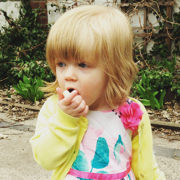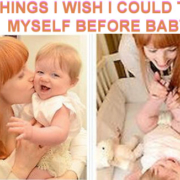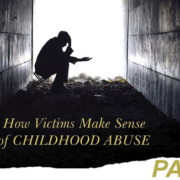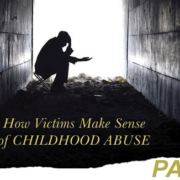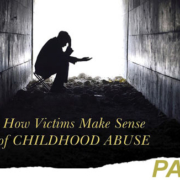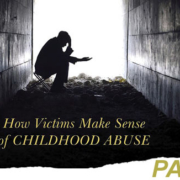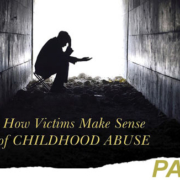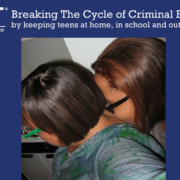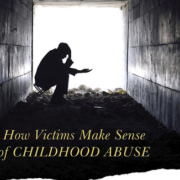© 2023 New York Foundling, Inc • 501(c)(3) • Tax ID #13-1624123
Terms of Use • Internet Privacy Policy • Notice of Privacy Practices • Financials • Report a Concern • Spanish • Website by Elefant
Written by Foundling Guest Blogger, Stephanie Kearns, Director of Business Operations
My husband and I love food. It is one of our last remaining luxuries in a home that has been turned upside down by a wonderfully energetic 18 month old. So, you can imagine that when it comes to preparing food, we take our time, select near perfect fresh ingredients and make appropriate size batches to feed a family of three. It is a bit of a letdown when little L decides she has no interest in our adult food and has no patience to wait until the meal is prepared. But it is important to us that we challenge her palate and expand her interest in food choices. We have found a few easy and quick ways to satisfy our picky eater and try to use the same ingredients from our meals so we cut down on prep time!
Recipe: Chunky Veggie Omelet
Ingredients:
- Frozen chopped organic kale, spinach or any green
- Organic large brown eggs
- Fresh leek, onion, scallion (whatever you have available)
- Butter
- Cheese (gruyere or cheddar) optional
- Heat skillet to medium heat
- Drop small spoonful or ½ Tblsp of butter into the pan
- Chop 1 leek or 2 scallions and sauté until clear but before browning
- Crack 2 whole eggs and scramble in bowl with 1 tablespoon milk and ½ cup greens (milk is optional)
- Pour eggs in pan and gently cook to keep consistency chunky for little fingers to grab
- Cook thoroughly, let cool for 3 minutes and serve
Easy snacks:
- Hard boiled eggs
- No salt large rice crackers
- Carrot sticks
- Frozen organic turkey meatballs
- Chopped jicama
- Fruit for little hands (blueberries, bananas, apples)
Happy eating!!
Written by Foundling Guest Blogger, Stephanie Kearns, Director of Business Operations
Don’t over-commit to things like writing posts or blogs, there is never enough time in the day! Only kidding. If I can impart any wisdom on mothers and fathers to be, it’s a privilege to share some helpful tips:
1. You will never be able to fully prepare. I know this is a tough pill to swallow but if you’re a perfectionist or control freak like me, it becomes an unfulfilling endeavor to make the scene perfect before baby. Do your best, get the most necessary goods and the rest will fall into your lap. Trust me, friends will come out of the woodwork and free goodies will fall on your doorstep. You will survive without the $300 baby monitor that allows you log on wirelessly.
2. That leads me to #2; Don’t go for the priciest items on the spectrum. That baby monitor I refer to above? I have yet to use it and babysitters and visiting family members can’t use it because it’s too complicated to set up. You have to download an app, make sure Time Warner doesn’t fail you and zoom the camera around wherever your little one decides to crash at that particular moment. Get the good ole’ fashioned noise notifier. It does the trick!
3. Breastfeeding vs. formula. Oh boy, hot topic! Yes breastfeeding is natural, amazing and magical all in one. But truth is, most people have an extraordinarily hard time doing it. Do not beat yourself up as you learn to embrace the idea of breastfeeding. Relax, take your time and supplement in between. I’m not a doctor but I found that stress contributed to making a difficult new experience almost impossible. Feeding your child, no matter how you choose to do it is the most important thing. Nourishment and love is what they need, not a frustrated mom.
4. Don’t overindulge in the internet while pregnant or once you have the baby. I spent WAY too much time looking up every single symptom, quirk and oddity that I experienced and wasted so much time when I could have been sleeping or bonding with my husband or baby. Take a class when you’re around 7-8 months pregnant and you will get the tools you need. Otherwise you will drive yourself crazy believing that your baby has a lip tie and THAT is the reason they disconnect from the bottle or breast during feeding. Relax, they are just excited about the world around them.
5. My last piece of advice is to let go early. I love my baby girl, she is the absolute best thing I ever did and improved my life beyond measure. But don’t neglect the other areas of your life because of guilt or fear. Spend time with your partner, go out with your friends, ask your support system to babysit so you can read that book you’ve been dying to finish – heck you can still do it in the house – just get relief for those precious moments of pleasure. You deserve it and your baby deserves a parent who can love herself too.
In this 6-part series, Dr. Baker will provide a summary of the topics discussed in the book.
Bonded to the Abuser: Part 5
The 45 memoirs summarized and analyzed in Bonded to the abuser: How victims make sense of childhood abuse, heartbreakingly portray the basic desire most children have – even those abused and neglected – to be accepted and loved by their parents. They depict a scenario in which – absent any external influence – that desire remains intact, intractable regardless of the quality of the actual parenting the children receive. The authors of these memoirs while growing up could not imagine a way to go forward except in search of the love of their parent. In that sense, they are profoundly stuck. There is no alternate path in view. They are filled with unrequited longing and stuck in the belief that it is the parent’s love and acceptance that will make them loveable and worthy of being loved.
Thus, one of the tasks of healing from this kind of trauma is to modify the belief that the parent must love and accept the child in order for the child to love himself and accept himself as a good and worthy person. In this way, the maltreatment victim needs to “unbind” or “unbond” himself from the maltreating parent, separating himself from that parent’s views of him. As long as the abuse victim’s mind is locked into emotional dependency on the abuser, there is little chance he can move forward away from the pain of the abuse.
It is clear through reading these 45 memoirs that the act of storytelling itself can play a central role in that very important process of untethering the abuse victim from the abuser. Storytelling has a long history in the healing of trauma, and deservedly so. The healing power of telling one’s story is certainly evident in the memoirs reviewed for this book. The authors painstakingly memorialized their painful childhood struggle with the hopes and expectations that in doing so they would diminish and manage their pain in a new way. There are many lessons that can be learned from these memoirs – summarized in Bonded to the abuser – that can be applied to the work that we all do every day with survivors of childhood maltreatment.
The New York Foundling’s Dr. Mel Schneiderman and Dr. Amy Baker are the authors of “Bonded to the Abuser: How Victims Make Sense of Childhood Abuse” – available May 16th. To purchase or view the book on Amazon.com please click here: Bonded to the Abuser: How Victims Make Sense of Childhood Abuse
To visit the author’s website: http://www.amyjlbaker.com/
Acknowledgments: Selected by Rowan and Littlefield for a book signing at the 2015 Book Expo of America
In this 6-part series, Dr. Baker will provide a summary of the topics discussed in the book.
Bonded to the Abuser: Part 5
The federal government defines neglect as a failure to act in such a way as to present an imminent risk of serious harm to a child. As can be imagined, there are many types of neglect. One type, physical neglect, was the focus of the six memoirs read for Bonded to the abuser: How victims make sense of childhood abuse. Physical neglect itself has several subtypes: abandonment (leaving the child unattended), expulsion (refusing to exercise custody of the child), shuttling (repeatedly leaving the child in the care of others), nutritional neglect (failing to provide proper nourishment such that the child is undernourished and/or chronically hungry), clothing neglect (failing to provide the child with appropriate clothing), and other (inadequate hygiene, reckless disregard for the health and safety of the child).
It is clear from reading these six memoirs written by adult survivors of childhood physical neglect, that as neglected children they suffered tremendous physical hardship. They were hungry, dirty, and left to fend for themselves for the better part of their childhood. They did not have even their most basic needs for food, clothes, and shelter met.
Nonetheless, it is also clear from these memoirs that these children loved their parents very much and had an attachment bond that could not be extinguished. One way that children made sense of their experiences was to interpret their parent’s neglect of them as being caused by the parent’s own pain and suffering. Thus, these children did not believe that their parents intended to hurt them, which prevented them from becoming angry at the very person who brought them so much of their own pain and suffering. What these children wanted more than anything was for their parents to put aside their own needs to see that their children were in need of not just food and shelter but also love and attention.
The New York Foundling’s Dr. Mel Schneiderman and Dr. Amy Baker are the authors of “Bonded to the Abuser: How Victims Make Sense of Childhood Abuse” – available May 16th. To purchase or view the book on Amazon.com please click here: Bonded to the Abuser: How Victims Make Sense of Childhood Abuse
To visit the author’s website: http://www.amyjlbaker.com/
Acknowledgments: Selected by Rowan and Littlefield for a book signing at the 2015 Book Expo of America
In this 6-part series, Dr. Baker will provide a summary of the topics discussed in the book.
Bonded to the Abuser: Part 4
The fourth type of childhood abuse discussed in Bonded to the abuser: How victims make sense of childhood abuse” is emotional neglect, a form of psychological maltreatment. Twelve memoirs were read in which emotional neglect was the primary or only form of child maltreatment perpetrated by the parent.
The memories of emotionally neglected children are stories of unbearable longing. They are stories of love and loss. They are stories of attachment and separation. They are stories of yearning against improbable odds for a parent to awaken from the slumber of self-absorption to once again look upon the child with love and affection. The stories are dreams of longing that never end, not even with attainment of adulthood nor the death of the parent.
As revealed in these stories, emotionally abused children want nothing more than for their parents to awaken from their self absorption and see them for the adoring children that they are. Unable to be seen through the fog of their parent’s depression, mental illness, and/or addiction, the emotionally neglected children were stranded, desiring the love and attention from a parent who was unable or unwilling to provide it. They were trapped by their desire to reclaim the love of a parent who was no longer emotionally present.
These descriptions of the child’s longing for the mother are consistent with what is known about how infants form and maintain attachment relationships with their first caregivers. Infants are born with a pre-determined capacity and need for attunement and connection with a caregiving other. This is a basic emotional need that is part of the human make up. Thus, the longing in the infant for the mother/caregiver is hard wired and present from birth, and remains of paramount importance to the child throughout childhood and beyond. The longing described in the memoirs is a poignant reminder of the power of the attachment bond, regardless of the quality of the parenting the child receives.
The New York Foundling’s Dr. Mel Schneiderman and Dr. Amy Baker are the authors of “Bonded to the Abuser: How Victims Make Sense of Childhood Abuse” – available May 16th. To purchase or view the book on Amazon.com please click here: Bonded to the Abuser: How Victims Make Sense of Childhood Abuse
To visit the author’s website: http://www.amyjlbaker.com/
Acknowledgments: Selected by Rowan and Littlefield for a book signing at the 2015 Book Expo of America
In this 6-part series, Dr. Baker will provide a summary of the topics discussed in the book.
Bonded to the Abuser: Part 3
Not all childhood maltreatment is physical or sexual. Some parent hurt their children’s bodies and some parents hurt their children’s psyches. The third type of childhood maltreatment discussed in Bonded to the abuser: How victims make sense of childhood abuse” is emotional abuse. According to the American Professional Society on the Abuse of Children there are six types of psychological maltreatment, four of which are forms of emotional abuse. These are caregiver behaviors that result in a child feeling unloved, of no value, and only of worth in meeting another’s needs. Twelve memoirs written by adult survivors of childhood emotional abuse were summarized and analyzed for this chapter of “Bonded to the abuser.”
At the heart of each story of emotional abuse is a parent whose heart is not in the right place, a parent who – because of depression, mental illness, or addiction is too self-absorbed to be emotionally present and consistently loving to her child. In these stories the emotionally abusive parents varied in their educational background, socio economic status, cultural affiliations, professions, and lifestyles. What they shared, however, was their overwhelming inability to recognize and act on the fact that their children were separate people with their own experiences, perceptions, and subjectivity. In other words, they met the definition of a “traumatizing narcissist.”
As a result of the emotional abuse by a parent, the children absorbed three important lessons about themselves and their place in the world: I am not accepted for who I am, I am not safe, and I am not important. In this way, parental acts that fall within the category of emotional abuse can penetrate the very being of the child and shape their sense of who they, casting a long shadow on their lives.
The New York Foundling’s Dr. Mel Schneiderman and Dr. Amy Baker are the authors of “Bonded to the Abuser: How Victims Make Sense of Childhood Abuse” – available May 16th. To purchase or view the book on Amazon.com please click here: Bonded to the Abuser: How Victims Make Sense of Childhood Abuse
To visit the author’s website: http://www.amyjlbaker.com/
Acknowledgments: Selected by Rowan and Littlefield for a book signing at the 2015 Book Expo of America
In this 6-part series, Dr. Baker will provide a summary of the topics discussed in the book.
Bonded to the Abuser: Part 2
The second set of memoirs summarized and analyzed in “Bonded to the Abuser: How Victims Make Sense of Childhood Abuse” focus on sexual abuse of a child by a caregiver. Sexual abuse is both a criminal act and a child protection concern. From a child protection perspective, sexual abuse is defined as A) the employment, use, persuasion, inducement, enticement or coercion of any child to engage in or assist any other person to engage in, any sexually explicit conduct or simulation of such conduct for the purpose of producing a visual depiction of such conduct or B) the rape, molestation, prostitution, or other form of sexual exploitation, or incest with children. It is this last part of the definition that is reflected in the memoirs reviewed: sexual acts between a parent and a child.
An analysis of six memoirs written by adult survivors of childhood sexual abuse reveals that – in addition to often being frightening and painful – the most profound aspect of the experience is that it violates the child’s basic sense of trust and safety. The parent who should be protecting the child takes advantage of the child’s trust in him. In involving the child in sexual acts, the parent is warping the child’s identity as damaged and dirty, guilty, and shameful. According to the adult survivors, while the sexual abuse event may be of limited duration, the “stain” of the abuse can last for years if not decades. The desire for the atonement of the abusive parent is in many respects an illusion which maintains that parent’s power and control over the abuse victim. Healing begins when the abuse victim (as a child or as an adult) forgives and accepts him- or herself and no longer needs the abusive parent to serve that function.
The New York Foundling’s Dr. Mel Schneiderman and Dr. Amy Baker are the authors of “Bonded to the Abuser: How Victims Make Sense of Childhood Abuse” – available May 16th. To purchase or view the book on Amazon.com please click here: Bonded to the Abuser: How Victims Make Sense of Childhood Abuse
To visit the author’s website: http://www.amyjlbaker.com/
Acknowledgments: Selected by Rowan and Littlefield for a book signing at the 2015 Book Expo of America
Guest Post 11/4/14: Lori Cohen, MST Services
Crystal had reached the “What more can I do?” stage. Her 17-year-old daughter, Danielle, had been getting in trouble for years. It reached crisis overload when the girl disappeared over a Memorial Day weekend. Crystal was sure she had run away, but hesitated involving the police.
As time passed, the mother felt she had no choice and had a PINS (People In Need of Supervision) warrant issued on her daughter. This meant that if found, Danielle would be returned to New York City, where they lived, and brought before a judge.
Getting a warrant wasn’t a decision Crystal took lightly. She knew she ran the risk of losing her child to the juvenile-justice system. Danielle was found safe in Washington, D.C. And then things changed dramatically for mother and daughter. The New York City’s Administration for Children’s Services (ACS) had a mandate to keep kids out of the system and with their families whenever possible.
So instead of Danielle being carted away, the court recommended Multisystemic Therapy (MST) as her treatment plan. Crystal was “skeptical,” as she later put it. After all, she and Danielle had been seeing individual therapists for two years at great out-of-pocket expense with little evidence her daughter was improving. MST was different, Crystal was told. A therapist would be assigned to the case, she would work with them in their home—and it wouldn’t cost the family anything.
Crystal became further dubious when she heard that when Danielle wasn’t home, the therapist would spend time with the mother. “No way,” Crystal said. “This isn’t my problem. It’s my daughter’s.”
She began to change her stance after meeting Adriana, the MST therapist. Crystal and Adriana got together a couple of times without Danielle to develop a treatment game plan. Each adolescent is different, and cookie cutter won’t cut it.
Then, it was time for the first meeting in the family home—and a surprise for Crystal. Instead of sitting sullen, arms crossed and mute, Danielle spoke up and voiced her opinions. The session got heated, but Adriana was there to keep it under control and on track. In retrospect, Crystal felt the comfort of their own home allowed Danielle to express herself.
Slowly, Crystal realized she played a role in her daughter’s bad behavior. “It was hard, painful, in fact, hearing that what I was doing was wrong. I needed to set limits, stronger rules and learn my triggers and how to control them”.
Despite what seemed like progress, Danielle’s situation went from bad to worse. She was failing classes and wouldn’t graduate with her class. That’s devastating news for a senior in high school. Before MST, Danielle would have spiraled downward at this news. To keep that from happening, mother, daughter and therapist devised a plan around one of Danielle’s problem behaviors: how to improve her actions in school.
And then things changed dramatically.
Danielle set a goal. She wanted to attend college in the fall, which meant making up the three classes she failed and putting in 27 gym hours at the YMCA.
To keep the plan on track, Danielle was rewarded for homework completed on time (money for a college wardrobe) and suffered consequences if she did not. Crystal and Danielle recognized the need to improve their relationship. This meant spending time together—working out, going to church and the movies. They no longer had to be adversaries.
By the end of the summer, Danielle had completed her high-school requirements and enrolled at a nearby community college. Crystal firmly believes her daughter will take full advantage of this fresh start.
“If we didn’t run into MST, I don’t know where we would have been. I had run out of all my options. Now I tell people about MST. It saved our family.”
Crystal is convinced that MST worked because:
- The therapist came to their home—this made them more at ease to open up.
- They had access to a therapist 24/7. Crystal never felt alone.
- Crystal and Danielle were working together with the common goal of keeping Danielle out of trouble and out of a juvenile facility.
- The treatment was concrete—they worked on changing specific behaviors, identifying triggers, discovering patterns, developing new strategies and breaking old ones.
- Danielle received rewards for good behavior and was subject to consequences for bad.
- Then there was the added value of community support. Mother and daughter worked with the school to achieve positive results.
And speaking of positive result, Danielle’s case was dismissed because all the court-set goals were met.
- Danielle graduated from high school and is attending community college
- She stopped running away.
- Her verbal and physical aggression at home and school ceased. Instead, the teenager used effective communications strategies she learned from Adriana.
- And much to Crystal’s relief, Danielle stopped stealing and “borrowing” things without permission.
To learn more about MST and its long term results with siblings. Download this report.
In this 6-part series, Dr. Baker will provide a summary of the topics discussed in the book.
Bonded to the Abuser: Part 1
As anyone who works in child welfare knows, too often children are abused and neglected by their caretakers. We also all know the pain and suffering that parental maltreatment causes children both in the short run and sometimes over the course of their lives. What is less known is how strongly children feel the desire to remain with a parent who has mistreated them. This attachment to an abusive parent can be puzzling to an observer – and perhaps even to the abuse victim him- or herself. In order to better understand how and why children maintain bonds with abusive parents, we analyzed memoirs written by adult survivors of childhood maltreatment and have written a book, which is about to be released, entitled Bonded to the Abuser. The first section of the book describes and analyzes stories of physical abuse.
These stories are both moving and terrifying. In each, the author described severe physical abuse by a parent for the majority if not duration of their childhood. In response, the children (as described in the memoirs written when they were adults) wanted to understand why they were being hurt and, in the absence of any other explanation blamed themselves. They compared themselves to animals at the mercy of their abusers yet desiring of their love and willing to forgive them. They experienced their parents as omniscient, Godlike, and were obedient in response. They had empathy for their parents and wanted to understand what drove them to act as they did. They were hypervigilant of their parent’s moods and states of mind. They were afraid of losing that parent and yet wanted to be invisible to avoid further pain and suffering. They both loved and feared that parent. They craved that parent’s approval yet feared that parent’s attention. They lived in a state of chronic arousal. Perhaps most damaging was that the physical abuse became internalized in the child as a series of negative perceptions of the self as unworthy, dirty, and bad. The power the parents had over their children extended beyond the ability to inflict momentary physical discomfort. These parents had the power to define their children as worthy of abuse, a belief they carried within them for many years.


